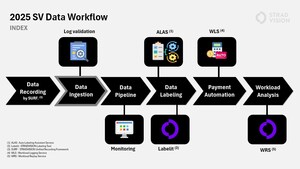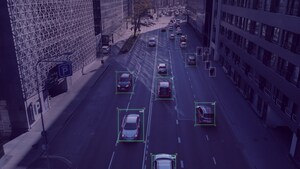SEOUL, South Korea, Dec. 19, 2019 /PRNewswire/ -- StradVision, an innovator in vision processing technology for Autonomous Vehicles, has announced it raised $27 million in its Series B funding round, led by Posco Capital. This round brings StradVision's total funding to $40 million.
Other Series B investors include: IDG Capital; Industrial Bank of Korea; Lighthouse Combined Investment; LSS Private Equity; Mirae Asset Venture Investment; Neoplux; and Timefolio Asset Management.
"StradVision's software solutions for Autonomous Vehicles and ADAS systems are proving successful and attractive to leading automakers and suppliers, as our latest round of funding strongly confirms." said Junhwan Kim, CEO of StradVision. "We appreciate all of our new investors coming on board, and StradVision will use this funding to take our groundbreaking products to the next level as we lead the advancement of camera technology in Autonomous Vehicles."
An industry leader in camera perception software, StradVision plays a critical role in ADAS capabilities such as Automatic Emergency Braking and Blind-Spot Detection.
StradVision's efforts are based on its SVNet Deep Learning-based software, which enables high-level perception abilities including: Lane Detection, Traffic Light & Sign Detection/Recognition, Object Detection and Free Space Detection.
With multiple mass production projects ongoing in China and Europe, in partnership with leading global OEMs and Tier 1 suppliers, StradVision will have millions of vehicles on the roadways using its software for Autonomous Vehicles and ADAS systems by 2021 — including SUVs, sedans and buses. StradVision recently earned the coveted Automotive SPICE CL2 certification, as well as China's Guobiao (GB) certificate — and StradVision is already deploying ADAS vehicles on Chinese roads.
StradVision, which currently has more than 105 employees in the United States, Germany, Korea, and Japan, recently partnered with a leading global Tier 1 supplier in cooperation and a number of commercial vehicle manufacturers on a side-camera project, and custom camera technology for autonomous buses. Current StradVision projects range from Autonomy Levels 2 through 4.
StradVision's SVNet software — which includes SVNet External, SVNet Internal and SVNet Tools software — provides real-time feedback, detects obstacles in blind spots, and alerts drivers to potential accidents. SVNet also prevents collisions by detecting lanes, abrupt lane changes and vehicle speeds, even in poor lighting and weather conditions.
StradVision is leading the march toward truly accurate vision processing reaching the mass market. 75 patents relating to StradVision's core technologies have been registered, and 79 more patent applications are in process.
SVNet's Auto Labeling System (ALS) produces training data with minimal human input, and a semi-supervised learning-based SVNet training tool enables customers to enhance SVNet by themselves during mass production projects. This application of unsupervised learning, which functions similar to how the human brain organizes data, gives machines nearly limitless understanding of the visual information they see.
When paired with commercial automotive-grade Systems on Chip (SoCs), SVNet's AI-based deep neural network is fully optimized and interacts in real-time with the world it is viewing.
Offering minimum latency and power consumption, it allows for proper real-world detection, tracking, segmentation and classification, and will be implemented in multiple production projects throughout 2020 — including trucks, self-driving buses and passenger vehicles.
About StradVision StradVision is an industry pioneer in vision processing technology, whose work will provide the software that allows Advanced Driver Assistance Systems (ADAS) in Autonomous Vehicles to reach the next level of safety, accuracy and driver convenience, and help usher in the era of the fully autonomous vehicle. Learn more at https://stradvision.com.
SOURCE StradVision

WANT YOUR COMPANY'S NEWS FEATURED ON PRNEWSWIRE.COM?
Newsrooms &
Influencers
Digital Media
Outlets
Journalists
Opted In






Share this article